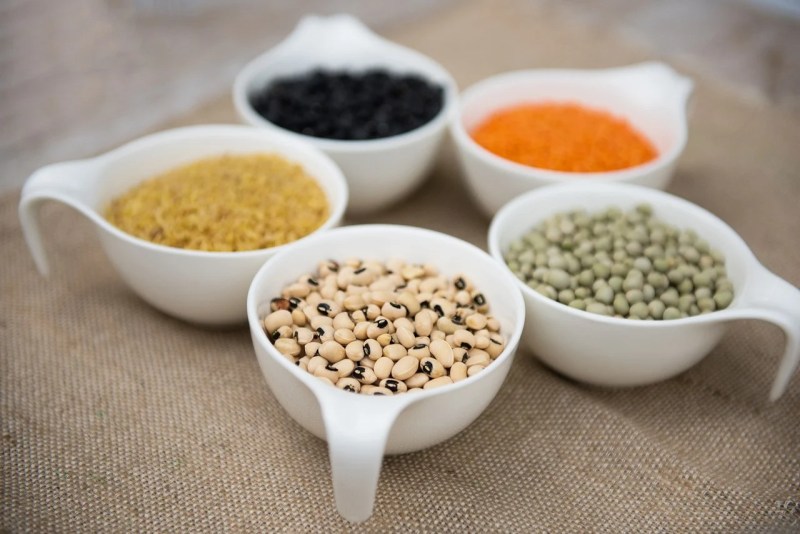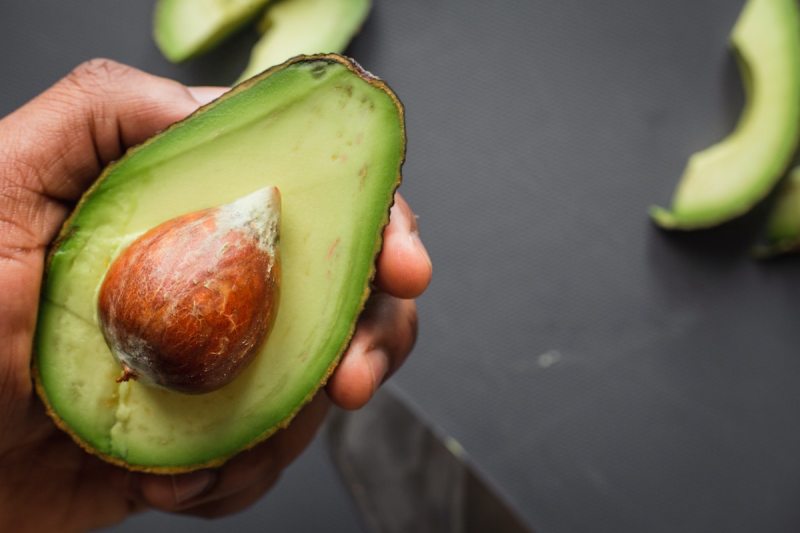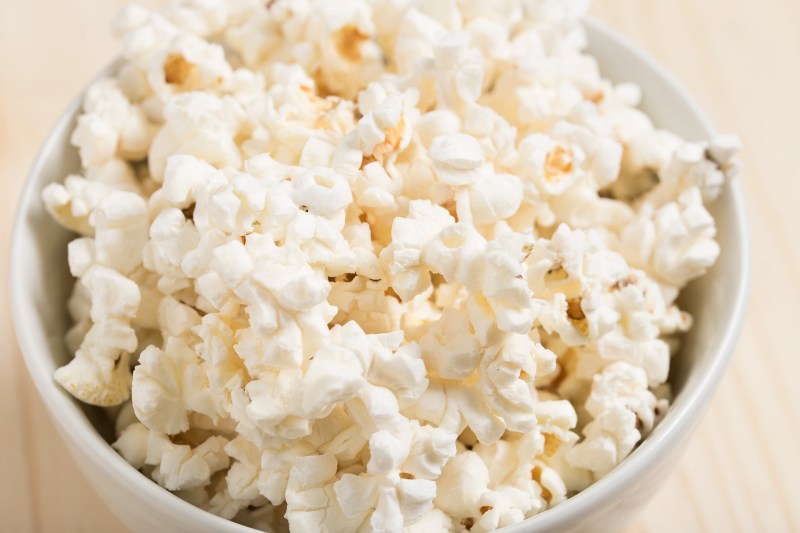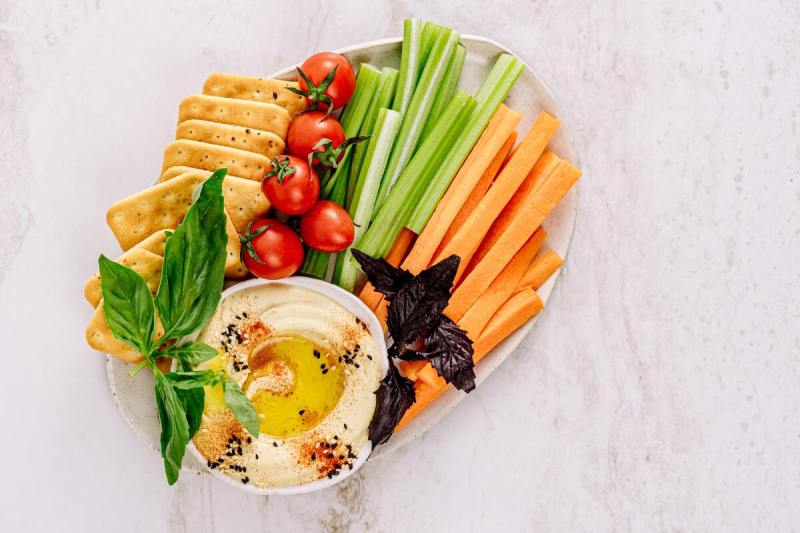
“You need more fiber in your diet.” How often has your doctor, nutritionist, or mom told you that? You probably know you need fiber, but do you understand why it’s so important?
The kind of soluble fiber that you find in grains, fruits, and veggies is best known for keeping you regular. You’re not as likely to suffer tummy problems or experience constipation if you constantly eat fiber-rich foods. While this is an essential component of healthy living, fiber has many benefits beyond regular, healthy bowel movements. Fiber also helps you maintain a healthy weight and reduces your risk for certain diseases.
Luckily, getting enough fiber in your diet is relatively simple. It exists in so many tasty foods and snacks that you can easily get the recommended amount daily amount of high-fiber foods.

How much fiber do you need?
Despite how easy it is to get fiber into your diet, most people fall a little short. If you’re an adult under 50, you need between 25 and 38 grams of fiber every day. If you’re over 50, you need between 21 and 30 grams.

7 of the most fiber-rich foods
1. Green peas
Peas contain about four grams of fiber per ½ cup, which is pretty powerful for such a small veggie. They’re also rather versatile. Easily add them to salads, pasta dishes, or rice bowls. You can also eat them as a side dish topped with some almond butter. Enjoy this with chicken, fish, or other entrees. If you like mashed peas, use them in dips or as spreads for toast and crackers.
Peas also contain a good amount of various vitamins that help protect your skin, eyes, and bones.
2. Avocados
Here’s another reason to love avocado toast! Each avocado has around 10 grams of fiber, so enjoy them in more ways than just on toast or as guacamole. Look for fun recipes that add flavor to smoothies and soups. Slice and place them on top of tacos, nachos, salads, rice bowls, and even with your egg breakfast in the morning. They also contain good fats that help protect your heart.
3. Beans
Beans contain a lot of fiber. Black beans, kidney beans, garbanzos — you name it. They can help you get the amount of fiber you need. For example, a cup of navy beans will give you a whopping 14 grams of fiber, which is about half of what is recommended for the whole day.
You can eat different beans every day and not repeat a meal for several weeks. Kidney beans in chili, black bean burgers, garbanzo beans in salads, veggie beans with your hot dogs, three-bean soup, and so on. They’re also a great source of protein and help lower bad cholesterol.
4. Lentils
Adding a half-cup of cooked lentils to your diet daily adds flavor and about seven grams of fiber. Lentil soup is a hearty meal, especially during the colder months, and you can also eat lentils in burritos, stews, curry sauces, salads, and burgers. Benefit from their protein and iron as well — substitute lentils for potatoes and rice for a healthy side dish with chicken or fish.
5. Almonds
Every ounce of almonds is worth three grams of fiber. Add them to your favorite trail mix or sprinkle a variety of toppings on them, such as Himalayan salt, sriracha, wasabi, or barbecue sauce. You can also include almonds in cooked veggies such as green beans or use them in salads and pasta dishes. Use almond butter instead of traditional butter as a low-fat, fiber-rich substitute.
6. Quinoa
If you’re cooking a meal that has rice as a side dish, consider quinoa instead. To round out a healthy meal, it goes great with tofu, meat, chicken, and fish. Each cup contains over five grams of fiber and more than enough protein as well.
7. Walnuts
Just two cups of walnuts every day gets you the fiber you need for a healthy diet. Add them to cereal in the morning and salad in the evening. You can also mix them with smoothies or fiber-rich fruits like apples for a nutritious snack. In addition, they’ll benefit your heart with lots of omega-3 fats.

5 snacks to incorporate fiber into your diet
1. Popcorn
Air-popped popcorn contains a fair amount of fiber without a ton of calories. Consider fun toppings with your favorite spices like garlic and parmesan cheese. You can also add nutritional yeast or a few little pieces of dark chocolate for a special treat.
2. Bananas
Each medium-size banana gives you about three grams of fiber, so grab one if you’re looking for a quick snack. They’re also filling and tasty additions to cereal, smoothies, oatmeal, or chopped up with berries, grapes, and other fruits. You can even add a chopped-up banana to a peanut butter sandwich.
3. Peanuts
Speaking of peanuts, a cup of these healthy nuts will add 28 grams of fiber to your diet. Eat them alone, unsalted, or add some to your favorite Asian noodle dish. If you spread some organic peanut butter on whole-grain bread with preserves, you have a fiber-rich and healthy version of the traditional PB&J.
4. Hummus and veggies
Hummus is one of the best snacks around, and one cup adds about 15 grams of fiber to your diet. Adding hummus to salads, sandwiches, and wraps is always popular and tasty. Or you can serve it as a dip with fiber-rich veggies like broccoli as an appetizer when entertaining friends. Hummus is also great with chips, crackers, and pita bread.
5. Figs
Fresh figs add a sweet, savory taste to desserts, or eat them alone for a tasty treat. Just two of these contain about six grams of fiber as well as iron and antioxidants. They’ll also assist with getting blood sugar and triglycerides to healthy levels. Add them to whole-grain bread, yogurt, or ricotta cheese for a quick, nutritious snack.

Benefits of eating a fiber-rich diet
1. Keeps you regular
Fiber is most famous for increasing the weight and size of your bowel movements. This softens your stool, which makes it easier to pass. Fiber also bulks up watery stools. This helps prevent both constipation and diarrhea.
2. Lowers cholesterol
Foods high in fiber, such as beans and flaxseed, help lower bad cholesterol. Fiber-rich diets do this while lowering blood pressure and inflammation. This benefits the heart and helps people feel more energetic.
3. Contributes to healthy weight
Eating high-fiber foods fills you up quickly, so you don’t eat as much. They also take longer to digest, so you don’t feel hungry or snack as often. This leads to fewer calories throughout the day.
4. Controls blood sugar
If you have diabetes, you’ll benefit from fiber’s ability to help control blood sugar levels. It slows down the absorption of sugar and reduces the risk of type 2 diabetes at the same time.

Can you have too much fiber?
Typically, some thought and planning have to go into even just reaching your recommended daily fiber intake, so not too many people naturally overconsume fiber. However, if you are vegan or vegetarian or are simply a huge fan of veggies, you may end up eating too much fiber.
A few symptoms you can keep an eye out for are bloating, cramping, indigestion, and constipation. If you experience these symptoms, try tracking how much fiber you eat on a daily basis. If you are over the recommended limit, you can scale back on certain foods and replace them with others to ease the stress being put on your digestive system.



